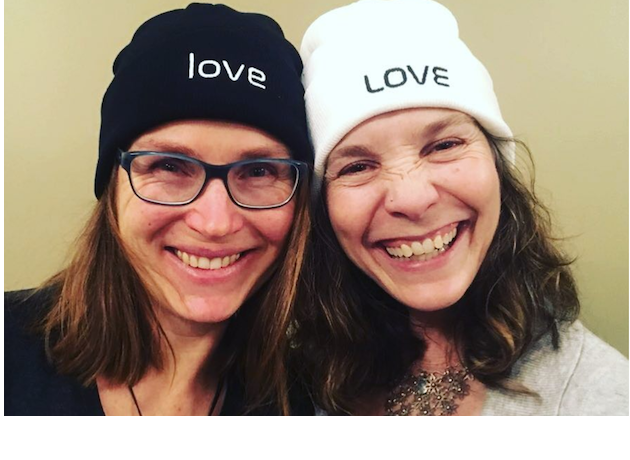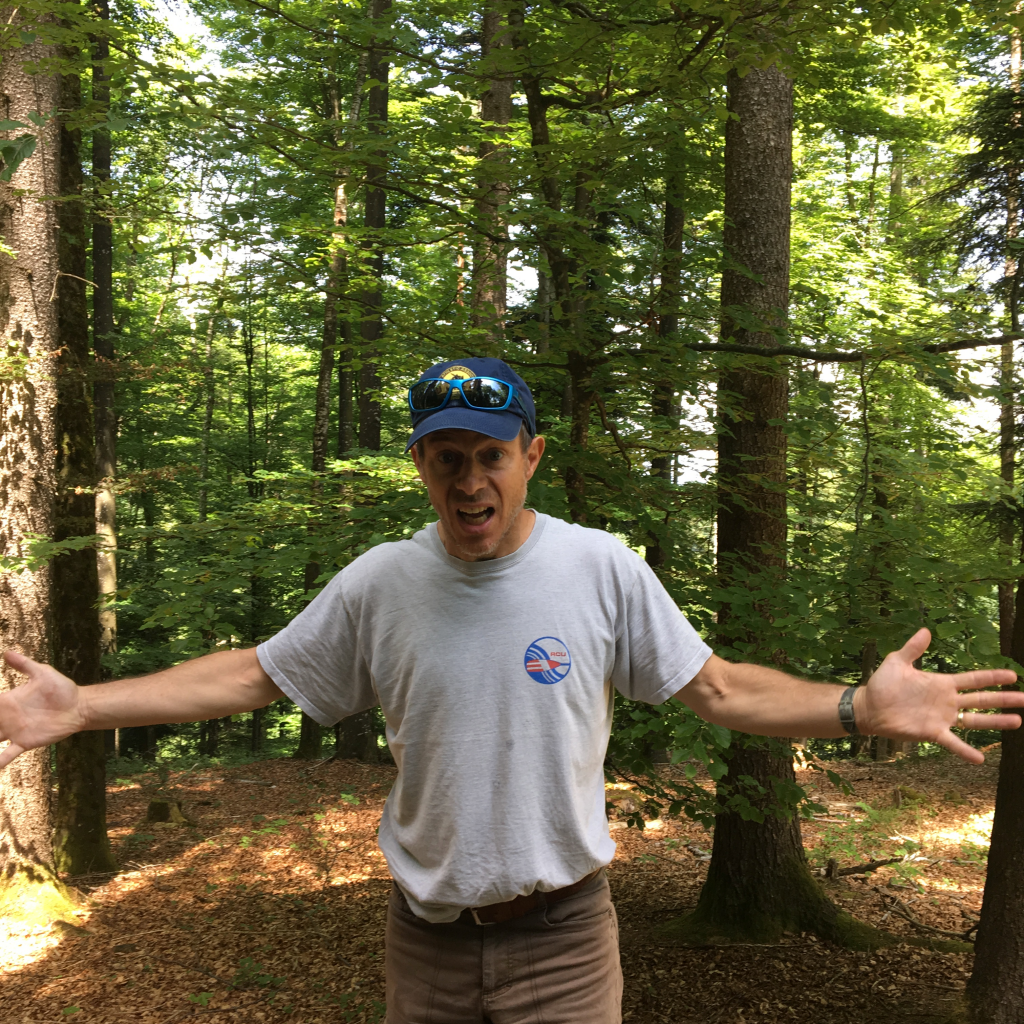Beiträge mit dem Stichwort: ‘relationship̵
Love is dark and light – 3 steps to work through struggle toward healing
Love has two faces: Dark and light. Yet what does that mean? And how do you work with it?
Popular culture says love is only light. That made sense to me and I tried hard to be only a (de)light when I first found spiritual practice. My goal was to be forever peaceful and loving. I thought if I meditated hard enough, my being would invite only light, and my relationships would be pure harmony.
Hm… that didn’t happen. Yes, I found useful insight and transformation through spiritual practice. And no, I wasn’t peaceful and loving all the time, much as I tried to fake it (more on that here). So I re-doubled my effort. Which led to a host of very valuable changes, yet I still struggled, particularly in relationship, and I still frequently got controlling, critical and angry. The same seemed to be true for my fellow practitioners and most of my spiritual teachers.
The missing place of practice that helped me make real progress here was… relationship! My meditation cushion and my yoga mat were helpful solitary places, yet finding the ability to work with myself in relationship was the springboard to find where I had wanted to be: On a path of learning to deepen intimacy and to be fulfilled. Making my relationships sources of energy, rather than energy drains.
Times of struggle in relationship are now a highly effective place of practice for me, and an opportunity for growth and healing. The often cited statement „relationship is work“ has come to life for me, and its meaning is no longer abstract, yet a reminder of a specific practice. Here is one huge building block of that specific practice.
Three steps of working with times of struggle that constitute one major route toward healing
The first step of the work is noticing the impulse to distract. Dark times are painful times. Times we do not enjoy. Scared times, sad times… Those are the times we want to distract. We seek comfort in our distractions. They can be little, such as zoning out, or eating a cookie, or bigger, such as talking about it, rather than staying in it, drinking alcohol, going outside of our relationship and having an affair.
Noticing the impulse to distract becomes far easier when you know your favorite distractions: coffee, sugar, drinking, social media, drama. What is your favorite way to get out of your experience?
My favorite distraction? Focusing on the other person instead of myself. I analyze them to figure them out, I crack a joke or care-take them to get out of my feelings, or I criticize. What they offer is not right, and therefore I am alone. Yadi-yadi-ya…
The more you know yourself here, the easier it becomes to use your distractions as reminders to pause and proceed to Step 2.
Step 2 is simply: Checking in. What am I feeling? Drop in to yourself and feel how you are doing. Take a deep breath. Too simple to work, right? Yes, I have to fight resistance in the form of this thought every time. I want to use only my brain instead. And: In my experience this step is simple, difficult to do, AND very effective.
So pause, breathe, and silently notice and name. If you are with someone, and need to pause, be transparent: „Hang on, I need to pause for a moment.“
Notice the uncomfortable emotion. Allow awareness of your experience. Yikes, who would want to do that? I think you probably are crazy enough to try, because you understand that hard paths lead to exciting places. So: What is your experience?
Perhaps you are feeling hopeless, angry, hurt or scared, or a wild mixture of all of that. Do you need some guidance on your primary emotions? I like the old graphic by Robert Plutchik that can be found in this article. Notice the emotion, and notice the sensations in your body that go with that. It will help a lot to find a routine way for this checking-in process, like Dan Siegel’s SIFT practice, or your own unique little version (my friend Jolandé uses STEN: sensation, thought, emotion, number on activation scale).
If you were able to become aware of your distractive behavior and are now checking in with your felt experience, that is a big win!! Take a celebratory breath. You have used struggle as an opportunity to „do the work“ and that is a major achievement.
Now you can choose to do something new. You know that new choices bring new results. So, choose to not distract, but instead go do step 3.
Step 3 is choosing to stay connected. Connected to what? First and foremost, to yourself. This is another fundamental element of what „doing the work“ means: Hold yourself in warm regard and stay with your felt, embodied experience for a while. Yes, like you would hold a toddler with a scraped knee.
Take your experience seriously, because if you don’t, no-one else will. This is no easy feat, because most of us got the message that what we are feeling is wrong, unimportant or dangerous to notice. Perhaps not-feeling was a matter of survival for you when you were young.
For my elders it was in fact a matter of survival to not feel, as they managed to survive World War II under horrific circumstances. Also, they didn’t know what we know today: Our emotions can and will transform, if we take care of them. If we do not, they lead to unwelcome „complications“, like withdrawal, loneliness, discontent, restlessness, overeating, rage, depression etc. Holding down your emotions will deplete you and suck the life out of your relationships slowly, or explode those connections over and over again.
So, keep practicing step 3: Stay connected. To yourself, and hold yourself in warm regard. Allow your emotional experience to be essential information, just like other essential pieces of information you check in with all the time, such as your thoughts, your bodily sensations or what your ears are hearing.
If you are practicing the three steps while you are with your partner or a friend, you can choose to stay connected to them, too. A start for that would be to share your experience. „Right now I feel…“ And all sorts of interesting things can happen from there.
So, here is the work
- Step 1: Notice the impulse to distract.
- Step 2: Check in with yourself.
- Step 3: Choose to stay connected.
Choosing to stay with your experience and to stay connected to another person is the work that invites healing. It will transform your life. As you train up your ability to notice, be with and share your experience skillfully, your relationship will deepen, and become an incredibly effective place of healing. It will also become more and more fulfilled.
Healing is coming to terms with what is (Jon Kabat-Zinn). That includes noticing and staying with yourself, as these three steps guide you to do. As such this work is one main portal for healing.
Practice brings progress – so the three steps are best practiced with likeminded and skillful friends (like my friend and Relationship Coach Jennifer Morrison from The Relationship School® in the picture above: white hat is Jennifer, black hat is me). Their presence can help you stay with yourself, and learning to be present will expand your relational capacity further.
You can also find likeminded practitioners in our Relationship Training Community. This group comes with guidance from two experienced Relationship Coaches and teachers: Myself and Jolandé Heppell. Here we meet regularly to practice the art and work of relationship.
Practice right now and share one favorite way you distract in the comments below. I am curious!
When Fighting, This One Thing Makes Or Breaks Us
(Note: Originally I wrote this blog in 2016, after taking my first long-term relationship training course.)
I remember the last time I felt completely misunderstood and unseen. Feels really bad, right?
And even worse, it was my husband of 13 years who did not seem to understand me. At all. Until recently, I would have let it go, silently brooded and put my indignation on a growing pile of resentments.
I would have remembered a lover from years ago. The one who really understood me. The one who read poetry, like I do. I would have silently longed for a ghost from the past and endured my “fate”. I would have been thinking about how I would die, and my husband would discover my diaries. All my incredible thoughts would open his eyes and heart, and he would be filled with regret and longing. But then it would be too late…
Remembering this I feel pathetic. But, if I am honest, I did sometimes have such romantic thoughts.
But not this time. Not after 9 months of training as a “love warrior” with The Relationship School®. By now I had some arrows in my quiver. And not only did I know they were there, but the reflex to use them was in my bones (what a good feeling).
“Right now I feel really unseen and misunderstood.” I said.
My husband was getting used to this also. Instead of getting stressed out, and offering his usual “Oh I am sorry,” while quickly putting as much space as possible between us, he slowed down and turned to me, looking me fully in the eye.
“Oh.” he said.
I breathed. God, I felt like shit. I was filled with a mixture of anger, despair and exacerbation. I could feel my heart pounding. It took a lot of effort to return his gaze. My mouth turned dry. How I longed to hit and run! All I could think of was to continue breathing. Part of my mind offered angry retorts: Oh – is that all you have to say?!! I am fucking alone over here!! Another part answered: I hear you, yes, this feels like shit, just breathe. Breathe. This is energy, a wave, let it move through. The previous part offered more profanities. I breathed.
“Hearing you responding nothing but “oh” I feel even more alone. I feel insignificant and uncared for.”
“Oh.” he says again, looking like he is thinking very hard, stressed.
I snort a bitter laugh. I breathe. I can barely contain myself from shaming him, but I know better now.
He gulps. Then he seems to summon all he has: “I do want to understand you. I really do. I feel lost. Where do I start? What could I say, so you would believe me?”
I release a big exhale. My face softens. I can access my heart slowly… “Well, what did you hear thus far…?”
And so we continue talking. My husband staying with me, returning my gaze, leaning in. He has become a love warrior. When my voice gets snide he does not flinch. Or maybe a little. He continues to lean in. He even reflects back what I am saying. He continues to look at me. I talk and talk. He is still not getting it. And he is still here, trying to get my world. My eyes fill with tears and my heart opens wide in one swift unexpected movement.
From bitter to sweet in just a few breaths.
So, here is the one thing that makes or breaks my world in a fight:
Willingness. My husband trying to understand me with all of his heart.
My nervous system is calming down, I feel my brain getting less foggy. My vibe shifts in a way that seems less threatening to my husband. He regains more of his ability to listen and stay with me.
Finally we are moving in a cycle toward connection -– this time our direction is “virtuous” instead on “vicious”: A love cycle instead of a fear cycle.

